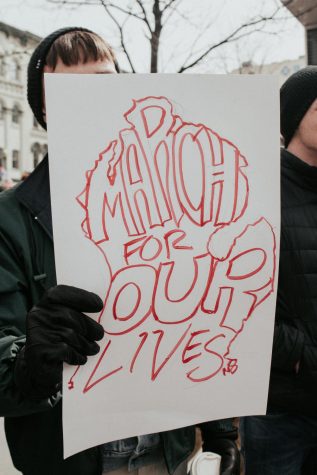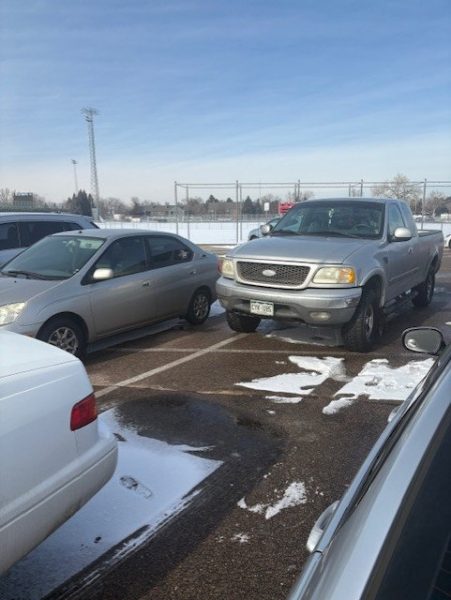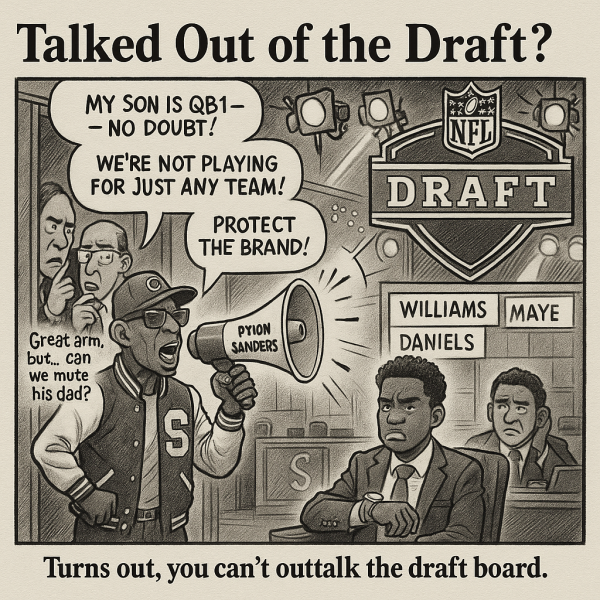A Dream of How to Reduce Gun Violence in the US

This is the second installment in a new series of articles published by The Highlighter in co-operation with the RMHS Political Engagement Club. In this series, two or more articles will take opposing stances on a given political topic. The following article questions whether laws, such as an assault rifles ban, are really the most effective way to combat gun violence in the United States.
Trigger warning: The following article discusses mass casualty shootings and suicide
While it has been drowned out by the vitriol surrounding the Trump Presidency, gun control has long been one of the most controversial issues in American politics. I think every American can agree that gun violence is a massive issue in this country, and that something needs to be done about it. Much of the mainstream debate surrounds banning automatic guns and/or assault rifles. This has been unproductive, and legislative deadlock has left us with no solutions to one of the most pressing issues of our times. Additionally, there are structural factors that cause gun crimes, particularly poverty, firearms trafficking and mental health. Until those issues are solved, the US will continue to have endemic gun violence. What is needed is wide ranging government programs targeting those causes and controls on who can purchase weapons.
While mass shootings are gruesome tragedies, effective gun policy cannot focus on stopping only them. One of the more talked about gun control policies is an assault rifle ban, and proponents of such a policy often cite their use in mass shootings. According to the Washington Post, since the 1966 University of Texas shooting, 1,246 people have been killed in mass shootings. They also claim that the majority of weapons used in such events were in fact handguns. According to the Department of Justice, the number of homicides in one year from 2000-2011 stayed close to the 10,000 mark. While I am not trying to diminish how tragic such events are, it is worth noting that they make up a tiny fraction of overall gun violence.
Furthermore, even if an assault weapons ban were to pass, it would inevitably fail to completely cut off the supply of automatic weapons. Trafficking of firearms is already a huge problem in the Americas, so there is a glut of illicit supply and suppliers. People who are going to commit atrocities clearly have no qualms with circumventing laws limiting what firearms they can own. The government needs to clamp down on black market firearms, and the easiest way to do that is by making the purchase of a registered firearm the most desirable option. Making firearms available legally takes customers away from crime syndicates and gives the government more control over who can own firearms, and what specifically they can buy. An assault weapons or bump stock ban would only succeed in creating an illicit market for those items.
Another factor that drives high rates of gun violence in the US is poverty. According to Caroline Logan, the United Nations has identified poverty as causing gun violence globally. Elizabeth Hlavinka says that the risk of being a victim of a gun crime is twice as high in the poorest communities relative to the richest. Whatever the causes, there is a clear correlation between inequality and homicide. This suggests that government actions targeting poverty would also alleviate firearms crimes. Here there are many options as well, from public works programs to welfare or increasing federal education funding.
According to UC Davis, in the United States 61% of deaths from firearms are suicides. The DOJ says that 73% of all homicides were committed with a handgun, as well as 90% of nonfatal firearm violence. If the goal is to diminish the overall incidence of firearms violence in the US, addressing handguns and mental health will be more effective.
There are numerous ways this could be achieved. Special background checks could be introduced for handguns. This could stop violent individuals from procuring a weapon before they commit the crime. There could also be laws disqualifying people who have been charged with certain misdemeanors from possessing them. For instance, many domestic abusers in the United States get away with only misdemeanors. This would even be politically feasible, even the most die-hard Republicans don’t complain that felons can’t own firearms. Committing such acts should be grounds enough for disqualifying someone from owning a firearm, at the least. Raising the age at which one could purchase a handgun could also reduce their use in such tragedies.
There are also many approaches to fixing the mental health crisis in the United States. They could include mandating that health insurance covers psychiatric care, as well as requiring that psychiatrists accept that insurance. That would ensure that everyone who can currently afford insurance in the US would have access to counseling or other options. Unfortunately, that is not everyone. There are those who would advocate for single payer healthcare, but seeing as that doesn’t have the best odds of passing the Senate right now, we require other options. One could be bringing back government funded psychiatric wards.
There are too many potential solutions to all of these issues to exhaustively list them here. Gun violence is a multifaceted issue, with complex causes, and lamentable effects. What is certain in the near term is that a ban on particular types of weapons would be as ineffective as it is politically infeasible. It is also obvious that something must be done to stop the appalling number of deaths caused by firearms in the United States.
Citations
Hlavinka, Elizabeth. “Gun Deaths in Young People: A Poverty Thing?” Medical News and Free CME Online, MedpageToday, 5 Oct. 2020, www.medpagetoday.com/meetingcoverage/aap/88957.
Logan, Caroline. “The Relationship between Gun Violence and Poverty.” Borgen, Borgen Magazine, 31 May 2018, www.borgenmagazine.com/relationship-gun-violence-poverty/.
Planty, Michael, and Jennifer L. Truman. Firearm Violence, 1993-2011. Levin Library, Curry College, 2013.
Berkowitz, Bonnie, and Chris Alcantara. “More than 50 Years of U.S. Mass Shootings: The Victims, Sites, Killers and Weapons.” The Washington Post, WP Company, 27 May 2020, www.washingtonpost.com/graphics/2018/national/mass-shootings-in-america/.
“The Human Toll.” Facts and Figures, health.ucdavis.edu/what-you-can-do/facts.html.



